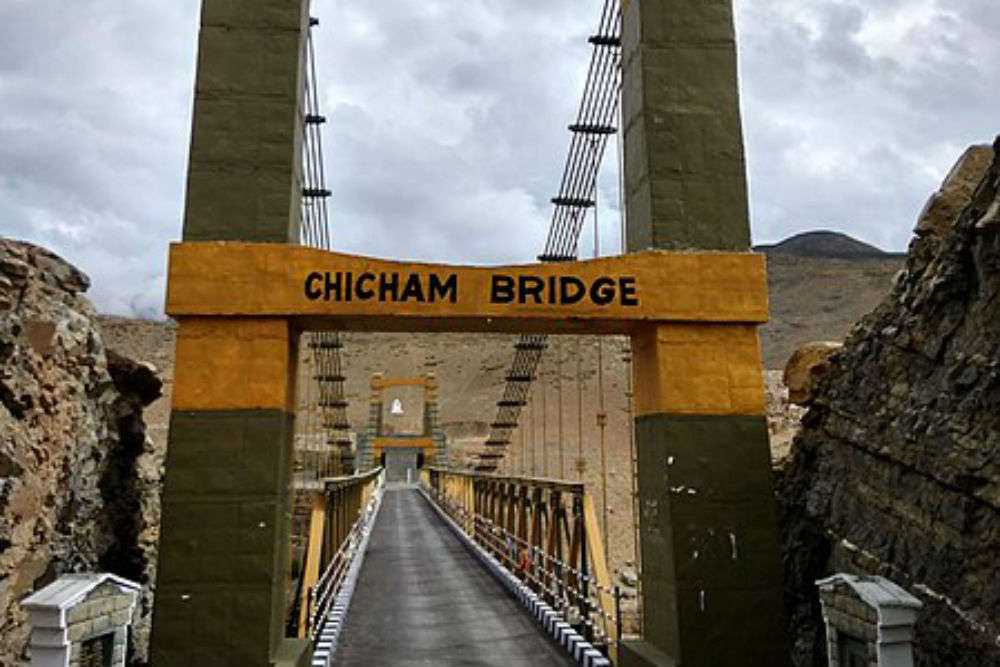Spiti with Chandratal Travel Guide/Itinerary
Published on November 17, 2025
Spiti Valley and Chandratal together create a journey that blends raw adventure with peaceful Himalayan beauty. Spiti offers ancient monasteries, rugged cliffs, remote villages, and crisp mountain air, while Chandratal—famously known as the Moon Lake—adds a touch of magic with its mirror-like waters and dreamlike landscapes. When combined, they deliver an experience that feels both wild and spiritual, perfect for those who crave an unforgettable escape.
Whether you're choosing Winter Spiti Tour Packages for snowy thrills or exploring the region during the summer for smoother travel, this duo fits every travel style. Families can enjoy breathtaking drives, safe sightseeing, and cultural experiences through a tailored Spiti tour package for family, while adventure lovers can trek, camp, and stargaze near the lake.
Together, Spiti and Chandratal make a journey that’s not just scenic but soulful—a perfect Himalayan pairing that leaves you with stories, calmness, and memories etched forever.

How to Reach Spiti Valley and Chandratal: Routes & Travel Options
Reaching Spiti Valley and Chandratal is an adventure in itself, with dramatic roads, high passes, and landscapes that feel straight out of a travel dream. Whether you’re planning an Adventure tour Spiti Valley, a peaceful solo trip to Spiti Valley, or a thrilling Spiti Valley bike tour, choosing the right route makes your journey smoother and more enjoyable.
There are two main routes to reach Spiti—each offering a different experience:
1. Shimla–Kaza Route (Open Almost All Year)
This is the safer, gradual-altitude route, perfect for beginners and families.
-
Route: Shimla → Narkanda → Rampur → Reckong Peo → Nako → Tabo → Kaza
-
Why choose this:
-
Better road stability
-
Gentler ascent (helps with acclimatization)
-
Ideal for solo travelers and winter trips
-
-
Best for: Safe travel, scenic drives, cultural experiences
2. Manali–Kaza Route (Open June to October Only)
This is the more adventurous and challenging route that passes through high-altitude wonders.
-
Route: Manali → Rohtang Pass (if open) → Gramphu → Batal → Kunzum Pass → Chandratal → Kaza
-
Why choose this:
-
Raw landscapes
-
Access to Chandratal Lake
-
Perfect for thrill-seekers and bike riders
-
-
Best for: Adventure lovers, bikers, off-road explorers
Reaching Chandratal Lake
Chandratal is accessible only from the Manali–Kaza side, usually from mid-June to early October.
-
You must take a diversion from Batal, followed by a rough 12 km stretch.
-
From the parking area, you must trek 1–2 km to reach the lake.
This route is especially popular among bikers doing the Spiti Valley bike tour, as well as travelers chasing the wild beauty of high-altitude lakes.
Transport Options
-
Shared cabs for budget travelers
-
Private taxis for comfort
-
Self-drive cars for experienced mountain drivers
-
Motorcycles for the ultimate adventure
-
Organized tours for beginners or families
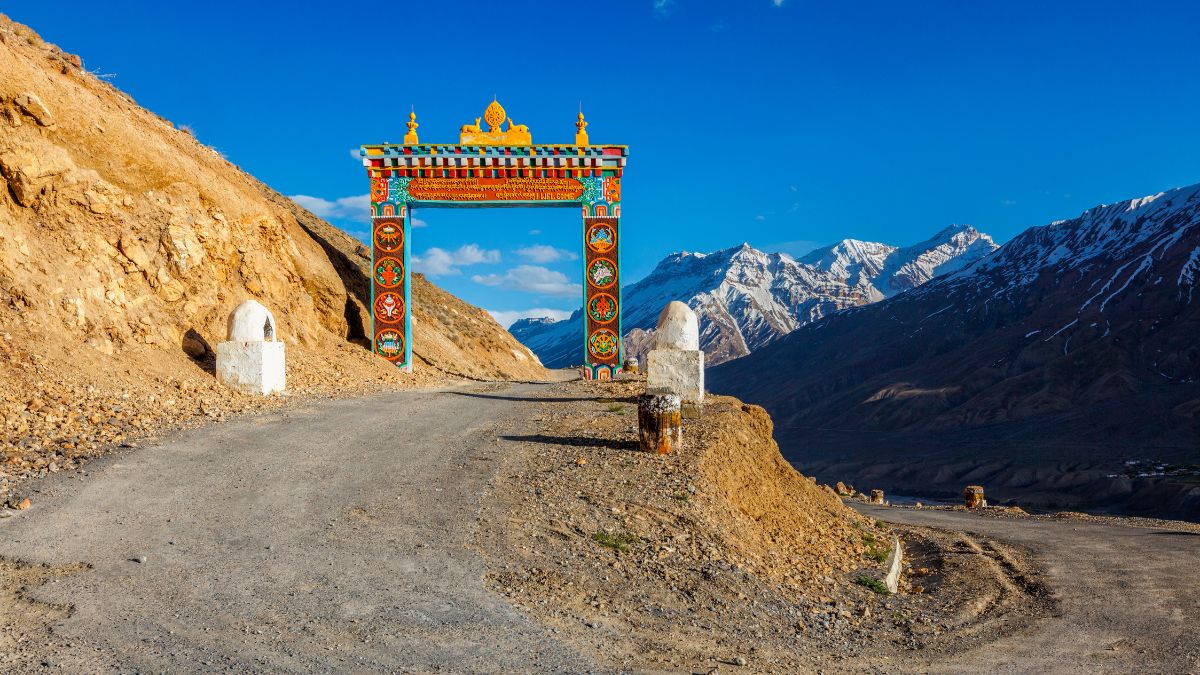
Ideal Duration: How Many Days You Need for a Perfect Trip
Planning the right number of days is the key to enjoying Spiti Valley and Chandratal without rushing through its dramatic landscapes and high-altitude beauty. The ideal duration depends on your route, travel style, and how deeply you want to explore the region.
For most travelers, a 7–8 day itinerary is perfect. This gives you enough time to reach Kaza comfortably, explore major attractions, visit monasteries, experience local culture, and spend a magical night near Chandratal Lake. If you take the Shimla route in and return via Manali, 8 days feels smooth and balanced.
If you want a more relaxed journey with extra time in villages like Langza, Hikkim, and Komic, then 9–10 days allows deeper exploration with better acclimatization. This duration is ideal for photographers, families, and anyone who prefers slow travel.
Adventure lovers or bikers who want to explore offbeat routes, hidden lakes, and remote hamlets can stretch their trip to 10–12 days, making room for detours and high-altitude rest.
In short:
-
7–8 days → Perfect for a complete, comfortable Spiti–Chandratal tour
-
9–10 days → Best for cultural exploration and photography
-
10–12 days → Ideal for bikers and adventure-focused travelers
The more time you give Spiti, the richer and more meaningful your Himalayan journey becomes.
Step Into Spiti: A Complete Day-by-Day Chandratal Itinerary by TourMyHoliday
DAY 0: Delhi to Shimla By Bus
- Gather and Report at meeting point and meet our trip captain.
- Depart for Shimla (Overnight journey ). Pit stop for Dinner
DAY 1: Shimla To Chitkul/Sangla
- The Spiti Expedition Journey starts with scenic beauty of kinnaur via Narkanda and Rampur.
- Travel along the sutlej river till karcham.
- Arrive Chitkul / Sangla in the evening and enjoy at the stay for night.
DAY 2: Chitkul To Kalpa
- After Breakfast, spend some time at leisure and check out.
- Explore Chitkul and departing for Kalpa.
- Reach Kalpa, by evening, check- in to your stay and have dinner.
DAY 3: Kalpa To Nako /Tabo
- Have Breakfast and check out and visit the popular Suicide point.
- Gue Monastry- 500 year old mummy.
- Passing by Spiti River, enjoy 360-degree view of the mesmerzing mountains. Reach Nako / Tabo, by evening.
DAY 4: Nako / Tabo To Kaza
- After Breakfast head Towards Tabo.
- After exploring Tabo, head towards the oldest monastery of the valley i.e Dhankar Monastery.
- Time to head towar the beautiful administrative town of Spiti Valley, kaza.
DAY 5: Langza | Hikkim | Komic | Key Monastery
- After Breakfast head towards Langza.
- After Langza head towards Hikkim.
- After Hikkim, visit Komic Village.
- Visit the spectacular Tibetan Buddhist Key Monastery
DAY 6: Kaza | Chicham Bridge | Chandra Taal Lake
- After Breakfast , head towards Chicham Bridge i.e, the highest bridge in Asia.
- Then reach Chandra Taal by evening via Kunzum La and Losar, Followed by an overnight stay.
DAY 7: Manali | Depart For Delhi
- After Breakfast at Chandra Taal stay leave for Manali via Atal Tunnel and get transferred to Delhi.
- Reach Delhi by early morning on the following day with amazing memories and new friends.
Best Time to Visit Spiti & Chandratal for Smooth Travel
The smoothest and safest time to visit Spiti Valley and Chandratal is June to September, when the high mountain passes open, the weather turns pleasant, and the roads become accessible for all kinds of travelers. This period fits perfectly with any Spiti tour package from Delhi, allowing you to follow a complete Spiti tour itinerary without worrying about snow-blocked routes or sudden closures.
June–July marks the beginning of the travel season. The landscapes are fresh, the air is crisp, and the Manali–Kaza route finally opens, giving you direct access to Chandratal Lake. This is the best time for smooth drives, stable weather, and comfortable acclimatization.
August brings dramatic skies and lush surroundings—great for photographers, though occasional showers may slow down travel. Still, it remains one of the most rewarding months for road trips.
September is considered the golden month. The skies turn crystal clear, temperatures remain stable, the crowds thin out, and Chandratal is at its most peaceful. Anyone planning a detailed Spiti tour itinerary finds September ideal for stargazing, village visits, monastery tours, and scenic photography.
After early October, snowfall begins, and Chandratal becomes inaccessible.
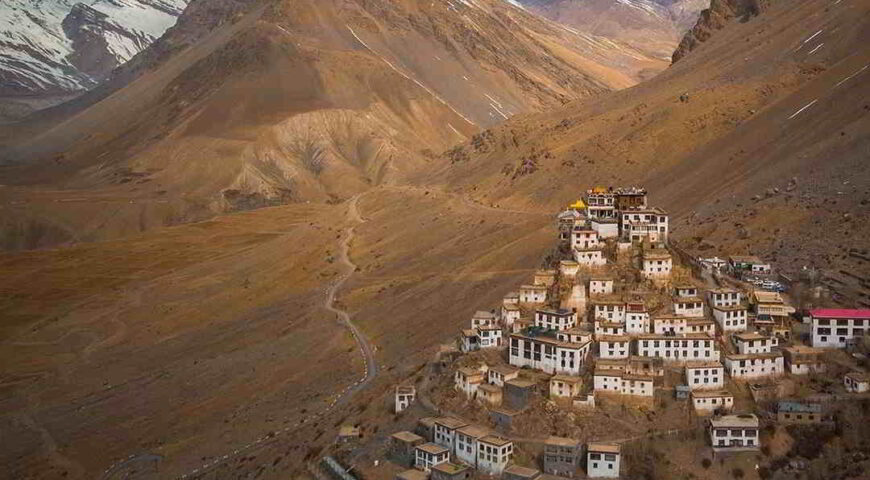
Where to Stay: Hotels, Homestays & Chandratal Camps
Choosing the right place to stay can make or break your Spiti–Chandratal experience. From cozy hotels to authentic homestays and seasonal lakeside camps, the accommodation options in Spiti cater to every type of traveler. Whether you are planning with Best Spiti Valley Tour Packages, Best Spiti Valley Tour Packages from Delhi, or joining Spiti Valley Group Tour Packages, knowing where to stay helps you enjoy your trip comfortably.
1. Hotels & Guesthouses in Spiti Valley
-
Kaza is the hub for hotels and guesthouses. You can find options ranging from budget-friendly lodges to mid-range hotels with Himalayan views.
-
Ideal for families, groups, and travelers who prefer convenience and comfort while exploring the valley.
-
Best months to stay: June to September, when roads are open and the weather is pleasant.
2. Homestays in Villages
-
Experience the warmth of Spitian culture in villages like Langza, Hikkim, Komic, and Kibber.
-
Homestays offer local cuisine, cultural immersion, and a chance to interact with friendly locals.
-
Perfect for those seeking an authentic Himalayan experience on Spiti Valley Group Tour Packages.
-
Best months to stay: June to September, for comfortable weather and accessible roads.
3. Camps Near Chandratal Lake
-
Direct lakeside camping is restricted to protect the fragile ecosystem, but several permit-based camps operate about 2–3 km away from the lake.
-
Camps range from basic tents to semi-luxury setups with bedding, meals, and toilets.
-
Camping here is ideal for adventure lovers and photographers who want to experience Chandratal at sunrise and stargaze at night.
-
Best months to camp: Mid-June to early October, when the lake is open, roads are clear, and weather is stable.
Tips for Booking & Staying
-
Book in advance during peak season (July–August) to secure camps and homestays.
-
Carry warm clothes, sleeping bags, and power banks, especially for Chandratal camps.
-
Opting for Best Spiti Valley Tour Packages from Delhi ensures hassle-free accommodation and transfers across hotels, homestays, and camps.
-
Group travelers can benefit from Spiti Valley Group Tour Packages, which often include stays at handpicked local homestays and Chandratal camps.

Road Conditions & Permits: What Travelers Must Know
Traveling to Spiti Valley and Chandratal is an adventure in itself, and understanding the road conditions and permit requirements is crucial for a safe and enjoyable journey. Whether you are joining Spiti Valley Group Tour Packages, planning self-guided Spiti tours, or using a detailed Spiti Valley travel guide, knowing these details ensures a smooth trip.
1. Road Conditions in Spiti
-
The terrain is high-altitude and rugged, with winding roads, steep cliffs, and occasional landslides.
-
Shimla–Kaza Route: Safer and relatively smooth, open most of the year except during heavy snowfall.
-
Manali–Kaza Route: More adventurous, only open from June to October, with high mountain passes like Rohtang and Kunzum.
-
Travelers should be prepared for narrow stretches, water crossings, and rocky patches, especially near Chandratal.
2. Permits Required
-
Certain areas of Spiti require Inner Line Permits for Indian and foreign tourists.
-
Kaza, Kibber, and Chandratal are part of restricted zones; permits are often arranged by travel agencies or can be obtained online or at checkpoints.
-
Group travelers on Spiti Valley Group Tour Packages usually have permits pre-arranged, saving time and hassle.
3. Tips for Safe Travel
-
Carry a spare tire, fuel, and first-aid kit, as fuel stations and hospitals are limited in remote regions.
-
Check weather reports before starting your journey; landslides or roadblocks can occur unexpectedly.
-
Use reliable vehicles for high-altitude travel; bikes and SUVs are preferred for adventurous routes.
-
If traveling independently, follow a Spiti Valley travel guide to plan stops, rest points, and overnight stays.
4. Best Practices for Tourists
-
For families and group travelers, joining Spiti Valley Group Tour Packages ensures safer travel and expert guidance.
-
Solo travelers or bikers should always inform local authorities of their travel plan and expected stops.
-
Respect local traffic rules and mountain etiquette; roads can be narrow and steep, requiring patience and caution.
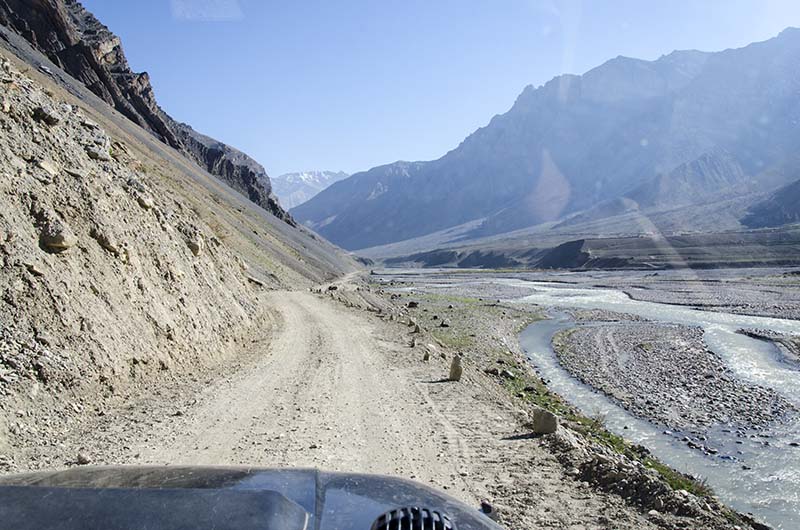
Food, Water & Essentials to Carry on the Trip
A successful journey through Spiti Valley and Chandratal isn’t just about breathtaking landscapes—it’s also about being well-prepared for the high-altitude terrain. Planning your meals, hydration, and essential gear ensures a smooth adventure, whether you’re following a Spiti Valley itinerary, camping in Spiti Valley, or traveling on a budget Spiti tour package.
1. Food to Carry
-
Pack lightweight, high-energy snacks like nuts, energy bars, dried fruits, and chocolates for treks and long drives.
-
Instant noodles, ready-to-eat meals, and oats are handy for camping nights at Chandratal or during remote village stays.
-
While many homestays and camps provide meals, having personal supplies ensures you’re never stuck, especially in less accessible areas.
-
For a budget Spiti tour package, carrying some staples helps manage costs and avoids limited options in remote villages.
2. Water & Hydration
-
Always carry a reusable water bottle with purification tablets or filters; tap water in villages may not be safe to drink directly.
-
Staying hydrated is crucial at high altitudes to avoid altitude sickness.
-
For camping in Spiti Valley, ensure sufficient water supply for cooking, drinking, and basic hygiene.
3. Essentials to Pack
-
Clothing: Layered outfits for fluctuating temperatures, windproof jackets, thermal wear, gloves, and hats.
-
Footwear: Sturdy trekking shoes or boots with good grip.
-
Camping Gear: Sleeping bags, lightweight tents, portable stoves, and headlamps if you’re camping near Chandratal.
-
Health & Safety: First-aid kit, basic medicines, sunscreen, sunglasses, and personal hygiene items.
-
Tech Essentials: Power banks, phone chargers, camera, and offline maps for navigation.
4. Tips for Travelers
-
Plan your Spiti Valley itinerary with meal stops and overnight stays to avoid long stretches without food or water.
-
When camping in Spiti Valley, pack extra essentials as shops are scarce near high-altitude lakes.
-
For those on a budget Spiti tour package, pre-planning your food and essentials ensures comfort without overspending.
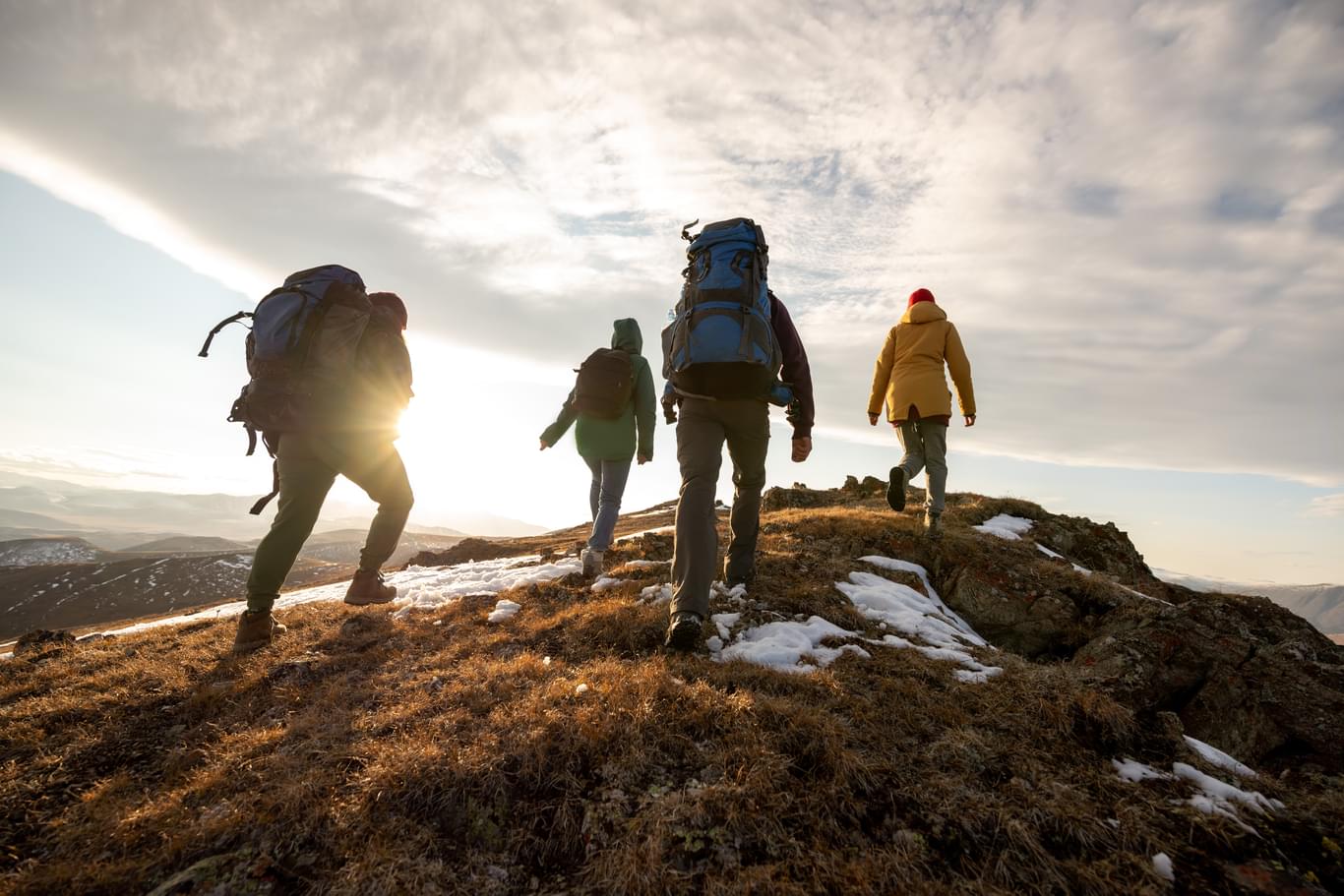
Travel Tips for Families, Solo Travelers & Bikers
Spiti Valley is a destination that offers something unique for everyone—families seeking serenity, solo travelers chasing adventure, and bikers craving high-altitude thrills. Planning according to your travel style ensures a safe, comfortable, and unforgettable experience, whether you’re following a 7 day Spiti Valley tour itinerary, joining an Adventure tour Spiti Valley, or embarking on a solo trip to Spiti Valley.
1. Tips for Families
-
Stick to a well-planned itinerary, ideally a 7 day Spiti Valley tour itinerary, to allow time for acclimatization and rest.
-
Choose comfortable accommodations like homestays or hotels in Kaza and key villages.
-
Avoid high-risk passes in bad weather; summer months (June–September) are safest.
-
Carry snacks, water, and basic medicines, especially if traveling with children.
2. Tips for Solo Travelers
-
Inform someone about your travel plan; keep copies of permits and ID.
-
Pack light but carry essentials for high-altitude conditions—warm clothes, a first-aid kit, and offline maps.
-
Solo travelers can benefit from joining a solo trip to Spiti Valley group or connecting with local guides for safety and cultural insights.
-
Focus on scenic photography, monastery visits, and short treks to experience Spiti’s soul.
3. Tips for Bikers & Adventure Seekers
-
Ensure your bike or vehicle is in excellent condition; high-altitude routes can be challenging.
-
Carry spare fuel, puncture kits, and basic repair tools.
-
Combine your trip with an Adventure tour Spiti Valley to explore offbeat trails, high passes, and Chandratal camping.
-
Start early to avoid afternoon clouds and landslides, and always check road conditions before venturing on remote passes.
General Advice for Everyone
-
Acclimatize properly to avoid altitude sickness.
-
Respect local customs and the fragile Himalayan ecosystem.
-
Always plan for contingencies—weather changes and roadblocks are common in high-altitude regions.
Following these tips ensures that whether you are on a family vacation, a solo trip to Spiti Valley, or a daring Adventure tour Spiti Valley, your journey remains safe, enjoyable, and full of memories.

Packing List for Spiti With Chandratal Trip
A well-prepared packing list is crucial for a comfortable and safe Spiti Valley and Chandratal adventure. The high-altitude terrain, unpredictable weather, and remote locations require careful planning. Here’s a comprehensive guide for travelers:
1. Clothing Essentials
-
Layered clothing: thermal innerwear, fleece jackets, waterproof jackets, and windcheaters
-
T-shirts, full-sleeve shirts, and trekking pants
-
Gloves, beanies, woolen socks, and scarves
-
Comfortable trekking shoes and sandals
-
Sunglasses and sun hats for strong UV exposure
2. Camping Gear (for Chandratal)
-
Lightweight tents (if not using pre-arranged camps)
-
Sleeping bags suitable for sub-zero temperatures
-
Portable stove, fuel, and cooking utensils
-
Headlamps or flashlights with extra batteries
-
Water bottles and purification tablets
3. Health & Safety Essentials
-
Personal first-aid kit including medicines for altitude sickness
-
Sunscreen and lip balm with SPF
-
Hand sanitizer and wet wipes
-
Insect repellent
-
Basic toiletries
4. Electronics & Navigation
-
Mobile phone and power banks
-
Camera and memory cards
-
Offline maps or GPS devices
-
Chargers and universal plug adapters
5. Food & Snacks
-
Energy bars, dry fruits, and chocolates
-
Instant noodles and ready-to-eat meals
-
Tea/coffee sachets for quick refreshment
6. Travel Documents & Miscellaneous
-
ID proofs and permits (Inner Line Permit, if required)
-
Cash in smaller denominations for remote areas
-
Notebook and pen for travel journaling
-
Reusable bags to minimize plastic use

Why Spiti With Chandratal Deserves a Spot on Your Bucket List
Spiti Valley and Chandratal together offer a Himalayan experience unlike any other, combining rugged landscapes, remote villages, and high-altitude lakes that feel almost otherworldly. Whether you’re embarking on a thrilling Spiti Valley bike tour, planning a serene snow trip to Spiti Valley, or joining a well-organized Spiti tour package, this region promises adventure, culture, and memories that last a lifetime.
The stark beauty of Spiti, with its monasteries perched on cliffs and windswept deserts, contrasts beautifully with the crystal-clear waters of Chandratal, reflecting the snow-capped peaks. For travelers coming from Delhi, a Spiti tour package from Delhi makes this remote region accessible without compromising comfort, allowing you to experience both adventure and ease.
Every corner of Spiti invites exploration—trekking through high passes, witnessing sunsets over golden landscapes, or camping near Chandratal under a sky full of stars. From adrenaline-pumping motorcycle rides to peaceful village strolls, every type of traveler finds something unforgettable here.
Simply put, Spiti and Chandratal are not just destinations—they are experiences. Whether you’re seeking thrill, solitude, or cultural immersion, this Himalayan duo deserves a top spot on your bucket list.
Conclusion: Crafting Your Perfect Spiti–Chandratal Adventure
Planning a trip to Spiti Valley and Chandratal is about more than just visiting a destination—it’s about embracing the rugged beauty, serene landscapes, and unique culture of the Himalayas. Whether you’re planning a thrilling snow trip to Spiti Valley or a leisurely journey, choosing the right Spiti tour package can make all the difference in ensuring comfort, safety, and a seamless experience.
For travelers coming from Delhi, a Spiti Tour Package from Delhi offers convenience and expert guidance, handling permits, accommodations, and road logistics. With a well-planned itinerary, you can explore the high-altitude villages, ancient monasteries, and Chandratal Lake, all while enjoying the breathtaking mountain scenery.
From camping under star-studded skies to riding winding mountain roads, every moment in Spiti and Chandratal feels extraordinary. By preparing carefully and selecting the right package, your Himalayan adventure becomes not just a trip, but a lifetime of memories etched in snow, rock, and sky.
Spiti and Chandratal aren’t just destinations—they’re experiences that inspire awe, adventure, and a deep connection with nature.
Frequently Asked Questions:
1. When is the best time for a snow trip to Spiti Valley?
The ideal time is November to April for snow experiences, though some high passes may be closed. Summer months (June–September) are safer for general travel.
2. How can I reach Spiti Valley and Chandratal from Delhi?
You can travel via Manali or Shimla routes. Many travelers opt for a Spiti tour package from Delhi, which arranges transport, permits, and accommodations.
3. Are there organized group options for Spiti travel?
Yes, Spiti Valley Group Tour Packages are available, covering Kaza, Chandratal, monasteries, villages, and high passes with guided support.
4. What is the recommended duration for a Spiti–Chandratal trip?
A 7-day Spiti Valley tour itinerary is ideal to explore Kaza, Chandratal, monasteries, and nearby villages without rushing. Longer itineraries (9–10 days) allow deeper exploration.
5. Can solo travelers safely explore Spiti Valley?
Absolutely. A solo trip to Spiti Valley is popular among adventure seekers, especially when following a structured itinerary or joining a group tour.
6. Is camping near Chandratal Lake allowed?
Yes, but only in permit-based camps located 2–3 km from the lake to protect the fragile ecosystem. Booking in advance is recommended, especially with Spiti tour packages.
7. What are the road conditions and challenges in Spiti?
Roads are high-altitude, narrow, and winding. The Manali–Kaza route is adventurous, while the Shimla–Kaza route is safer. Monsoon and snow may block passes.
8. What essential items should I carry for the trip?
Carry layered clothing, trekking shoes, water purification tablets, snacks, sleeping bags, and other essentials if camping in Spiti Valley.
9. Are there options for adventure seekers like bikers?
Yes, a Spiti Valley bike tour is extremely popular, offering high-altitude roads, mountain passes, and Chandratal adventure opportunities.
10. Which tour packages are best for families or first-time visitors?
Best Spiti Valley tour packages and Spiti tour packages from Delhi handle permits, accommodations, and sightseeing, making them ideal for families and first-timers.

